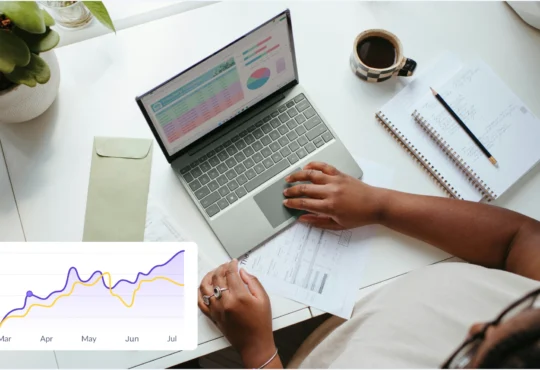
What Is Inbound Closing? A Complete Guide to Modern Sales Success
Understanding the Concept of Inbound Closing
Sales has changed dramatically in recent years, shifting from aggressive cold calls to conversations built on trust. This is where inbound closing comes into play. At its core, inbound closing is the process of converting prospects who have already expressed interest in your product or service, usually through inbound marketing channels like content, referrals, or social engagement. Unlike traditional outbound sales, which often relies on interrupting potential buyers, inbound closing focuses on guiding already-interested leads through their decision-making journey. It places the emphasis on providing value, answering questions, and helping prospects feel confident in their purchase. When asked, “what is inbound closing,” the simplest explanation is this: it’s the art of closing deals by building relationships with people who have already raised their hand to learn more. This approach makes it a natural fit for modern, customer-first businesses.
The Core Principles Behind Inbound Closing
Every effective inbound closer operates on foundational principles that set them apart from traditional sales reps. The first is trust — prospects must feel they’re speaking with a knowledgeable professional who has their best interest in mind. Instead of hard selling, inbound closers lean on value-based conversations, asking meaningful questions and delivering tailored answers. Another principle is alignment, ensuring that conversations match where the buyer is in their journey, whether they’re researching options or ready to make a final decision. Transparency also plays a central role, as inbound closing relies heavily on honesty about what a product or service can and cannot do. By focusing on these principles, inbound closers create an environment where buyers feel supported, not pressured. This approach is both ethical and effective, especially in industries where long-term relationships matter as much as the initial sale.
How Inbound Closing Works in Practice
Inbound closing isn’t guesswork — it follows a process designed to guide prospects seamlessly from interest to decision. Typically, it starts with a qualified lead generated through marketing campaigns, blogs, or referrals. Once the lead expresses interest, the inbound closer takes over, engaging in discovery conversations that identify needs, challenges, and goals. From there, the closer provides insights, shares relevant solutions, and positions the offer as the natural next step. Instead of pushing for a decision prematurely, inbound closers work at the pace of the buyer, ensuring every question is answered and objections are addressed. Many professionals follow structured methodologies that help standardize this process, but the human element remains central. Ultimately, the inbound closing process is about guiding, advising, and helping — not forcing — prospects to take action.
Essential Skills Every Inbound Closer Needs
Not everyone can thrive in this role without cultivating the right skills. The most critical is active listening, which allows closers to truly understand what the prospect values most. Empathetic communication comes next, as buyers need to feel heard and respected before they commit. Understanding buyer psychology is also essential because it equips closers to anticipate questions and address hesitations before they arise. Storytelling is another powerful skill; rather than reciting product features, effective closers weave narratives that show how a solution impacts real challenges. Additionally, inbound closers need to master the art of negotiation without relying on pressure tactics. They balance firmness with flexibility, ensuring deals are beneficial for both sides. With these skills combined, closers position themselves as trusted advisors rather than traditional salespeople.
Tools and Technologies That Support Inbound Closing
The modern inbound closer is equipped with tools that make the process smoother and more efficient. Customer relationship management (CRM) platforms help track conversations, pipeline stages, and buyer activity. Automation tools play a role in nurturing prospects with personalized follow-ups that keep the relationship alive. Analytics platforms provide insights into buyer behavior, showing what content or touchpoints influenced their interest most. Video conferencing tools enable seamless virtual conversations that feel personal even at a distance. Collaboration platforms ensure alignment between marketing and sales teams so prospects never feel a disconnect. The right combination of technology not only streamlines workflows but also enhances the personal touch that inbound closing requires. When used effectively, these tools give closers the ability to scale without sacrificing authenticity.
Examples of tools inbound closers often rely on include:
- CRM systems like HubSpot, Salesforce, or Pipedrive
- Email automation platforms such as Mailchimp or ActiveCampaign
- Analytics dashboards like Google Analytics or Hotjar
- Virtual meeting tools including Zoom and Microsoft Teams
- Collaboration apps like Slack or Asana
Benefits of Inbound Closing for Businesses
Companies that embrace inbound closing often see measurable benefits across multiple areas of their business. For one, conversion rates typically increase because leads entering the pipeline are already warm and interested. The sales cycle tends to shorten as well, since buyers have already engaged with educational content or brand messaging before speaking with a closer. Relationships improve because the process feels more consultative than transactional, encouraging loyalty and repeat business. Another major benefit is the alignment between sales and marketing, creating a unified strategy that delivers consistent experiences to the buyer. Businesses also find that inbound closing is cost-effective since it maximizes existing demand rather than relying heavily on cold prospecting. Ultimately, inbound closing provides a scalable, sustainable way to drive revenue while maintaining strong customer relationships.
Common Challenges in Inbound Closing and How to Overcome Them
While inbound closing offers many advantages, it isn’t without challenges. One common issue is handling objections that may arise even when a prospect has shown strong interest. Closer preparation and deep product knowledge are critical for overcoming this hurdle. Another challenge is managing leads who stall during the decision-making stage, requiring persistence balanced with patience. Striking the right balance between automation and personalization is also tricky; too much automation can feel robotic, while too much personalization can be time-intensive. Follow-ups pose another challenge, as closers must remain consistent without appearing pushy. The key lies in creating a process that respects buyer timelines while maintaining momentum. By anticipating these challenges and developing strategies to manage them, inbound closers can maintain effectiveness even in complex sales environments.
Inbound Closing vs. Outbound Closing: Key Differences
Comparing inbound and outbound closing highlights why the former is so valuable in modern sales. Outbound strategies typically rely on reaching out to large numbers of people with the hope of generating interest, often through cold calls or mass emails. Inbound, on the other hand, works with prospects who have already signaled interest, making conversations more targeted and effective. Outbound closing techniques often focus on persistence and overcoming resistance, while inbound closing emphasizes building relationships and aligning with buyer intent. Another difference lies in scalability; inbound strategies, supported by strong content and marketing efforts, can deliver consistent high-quality leads over time. Additionally, inbound closing fosters long-term loyalty, while outbound methods often prioritize short-term gains. Both approaches have value, but inbound closing is increasingly favored in industries where customer experience defines success.
The Future of Inbound Closing in the Sales Industry
As buyer behavior continues to evolve, inbound closing will remain a central part of the sales landscape. Personalization is becoming more critical, and inbound strategies are well-suited to meet this demand. Artificial intelligence and automation will play larger roles, offering insights that help closers tailor conversations at scale. At the same time, the human touch will remain irreplaceable, ensuring buyers feel genuinely supported. Businesses are also investing more heavily in aligning marketing and sales to create seamless handoffs, further strengthening the inbound model. Trends suggest that companies relying on inbound closing will enjoy not only higher conversions but also stronger brand reputation. Looking ahead, inbound closing will likely be the standard for businesses that prioritize trust, value, and customer relationships.
Frequently Asked Questions (FAQ)
What is inbound closing in sales?
Inbound closing is the process of guiding and converting prospects who have already shown interest, focusing on trust, value, and alignment with their needs.
How does inbound closing differ from outbound sales?
Inbound relies on qualified leads generated through marketing and interest-based interactions, while outbound depends on cold outreach to create demand.
Do inbound closers still need to cold call?
Generally, no. Inbound closers work with warm leads, but occasional outreach may be used to re-engage or follow up with prospects.
What industries benefit most from inbound closing?
Industries with long sales cycles and relationship-driven decisions — such as software, consulting, and professional services — gain the most from inbound closing.
Can beginners learn inbound closing without prior sales experience?
Yes. Many inbound closing skills, like active listening and empathy, can be developed through practice and training, making it accessible for newcomers.
Takeaway
Inbound closing represents the shift from transactional sales to customer-centered conversations. It answers the question of “what is inbound closing” by showing how professionals can guide buyers who are already interested, using trust, value, and authenticity as their tools. With the right skills, strategies, and technologies, businesses can see higher conversions, shorter sales cycles, and stronger customer relationships. While challenges exist, the future of inbound closing is bright, and those who master it will remain competitive in the evolving world of sales.









